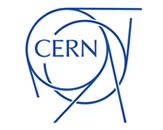European Organisation for Nuclear Research (CERN)
27 April 2021
Modified: 27 February 2024
Reading time: 3 minute(s)
 Its main profile is basic research in physics to increase our understanding of the building blocks of the universe and their operation. The largest particle physics laboratory in the world; half of all particle researchers work in CERN projects globally.
Its main profile is basic research in physics to increase our understanding of the building blocks of the universe and their operation. The largest particle physics laboratory in the world; half of all particle researchers work in CERN projects globally.
It studies subatomic particles with unique equipment: particle accelerators and detectors (accelerators greatly increase the energy of particle beams before letting them collide to each other or to fixed targets, while detectors detect and record collisions)
The Large Hadron Collider (LHC) is now the world’s largest and most powerful particle accelerator.
| Short name | CERN |
| Name | European Organization for Nuclear Research |
| Official website | https://home.cern/ |
| Year of foundation | 1954 |
| ESFRI project/landmark | nem ESFRI vonatkozású |
| Headquarters | Geneva, Switzerland |
| Number of member countries | 23 |
| Participating countries | Members: Austria, Belgium, Bulgaria, Czech Republic, Denmark, Finland, France, Germany, Greece, Hungary, Israel, Italy, Netherlands, Norway, Poland, Portugal, Romania, Serbia, Slovakia, Spain, Sweden, Switzerland, UK Candidates: Cyprus, Slovenia Associate members: Croatia, India, Lithuania, Pakistan, Turkey, Ukraine Observers: Japan, Russia, USA, EU, JINR, UNESCO |
Hungary’s accession |
1992 |
| Partner institutions in Hungary |
HUN-REN Wigner Research Centre for Physics HUN-REN Institute for Nuclear Research, Eötvös Loránd University, Faculty of Science, University of Debrecen, University of Szeged Hungarian University of Agriculture and Life Sciences Cerntech Kft. |
| Public administration representative |
László Lengyel, deputy: Györgyi Kolossváryné Juhász National Research, Development and Innovation Office Department for Strategy and Monitoring 1077 Budapest, Kéthly Anna tér 1. Phone: +36 1 795 2115 Email: gyorgy.juhasz@nkfih.gov.hu |
| Professional representative |
Péter Lévai HUN-REN Wigner Research Centre for Physics |
| Membership payments | 2019: CHF 6,965,950 (≈ HUF 2,299 million) 2020: CHF 7,516,200 (≈ HUF 2,480 million) 2021: CHF 8 029 550 (≈ HUF 2 716 million) 2022: CHF 8 580 300 (≈ HUF 3 089 million) 2023: CHF 8 825 750 (≈ HUF 3 409 million) |
Benefits of the membership for Hungary
- Access by Hungarian researchers to internationally unique and costly large research equipment.
- Opportunities to make new discoveries in basic research in physics which can serve as the basis for subsequent developments.
- The number of Hungarian users has been steadily increasing over the past 10 years, with 60-80 Hungarian researchers participating in various CERN experiments each year, totalling 78 in 2019 (ATLAS: 7, CMS: 27, ALICE: 26, SPS: 6, ISOLDE: 3, NEUTRINO: 1, others: 8).
- 17 students attended the Technical Student Programme of the institution in the last 5 years (2015-2019).
- The volume of Hungarian industrial supplies (based on purchase orders):
CHF 4,424,000 in 2018
CHF 4,864,000 in 2019
CHF 1,055,000 in 2020
CHF 1,100,000 in 2021
CHF 1,100,000 in 2022
- In proportion of supplies/contribution share, Hungary belongs to the “well-balanced” countries.
- The headcount of Hungarian permanent staff has increased in line with the share of membership fees, with 1 new Hungarian staff member in 2021, bringing the total to 17 persons in 2021 (0.64%), (12 researchers/engineers, 3 technicians, 2 administrator, 3 of them women).
- Every year, 1-2 young Hungarian researchers are awarded a scholarship to CERN’s doctoral school, 4 in total between 2017-2021.
- Every year, 2-3 Hungarian students are accepted to the CERN Summer Student Programme (13 students in 2017-2021) and 20-22 physics teachers participate in a professional study trip.
Updated: 27 February 2024






